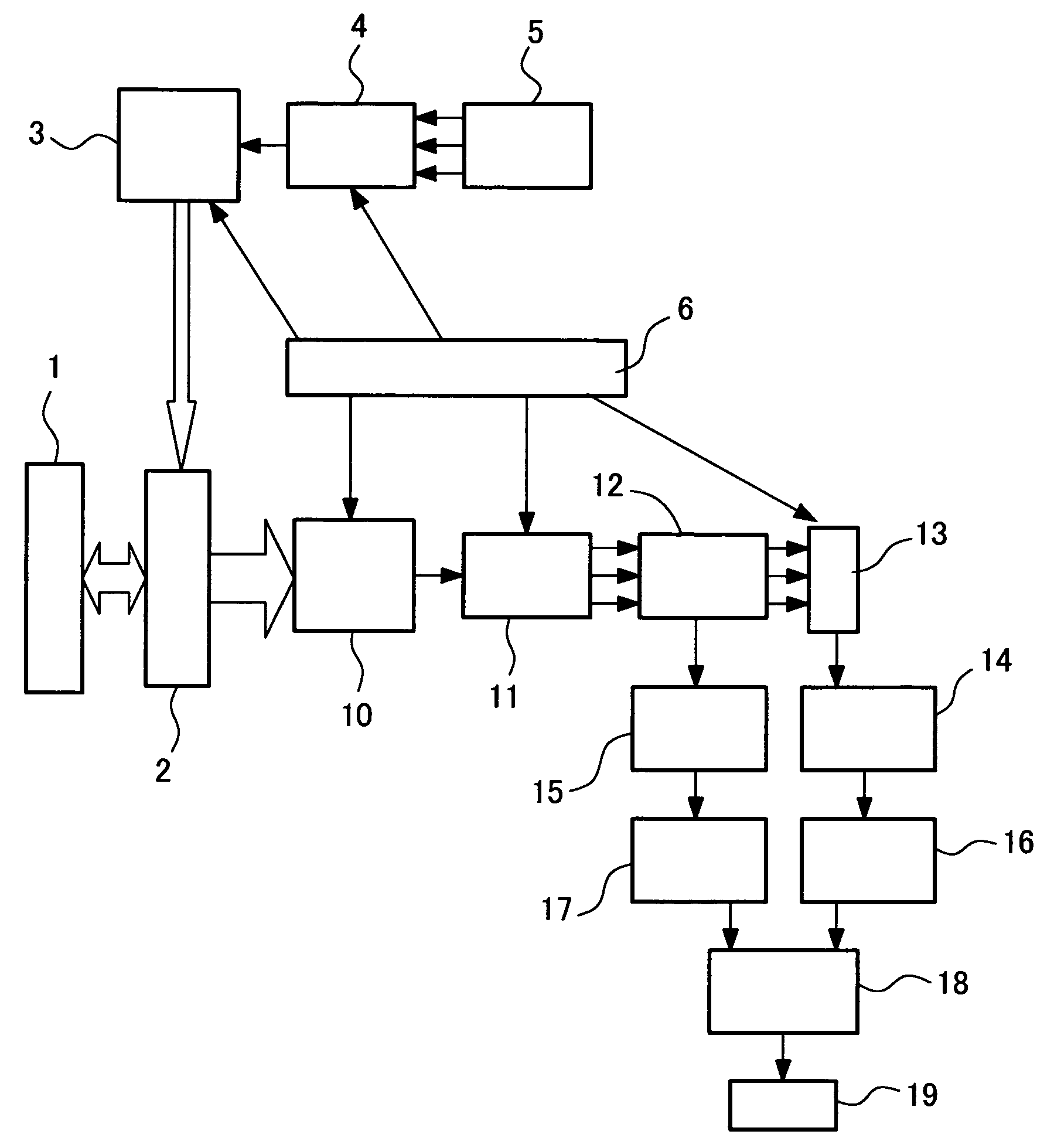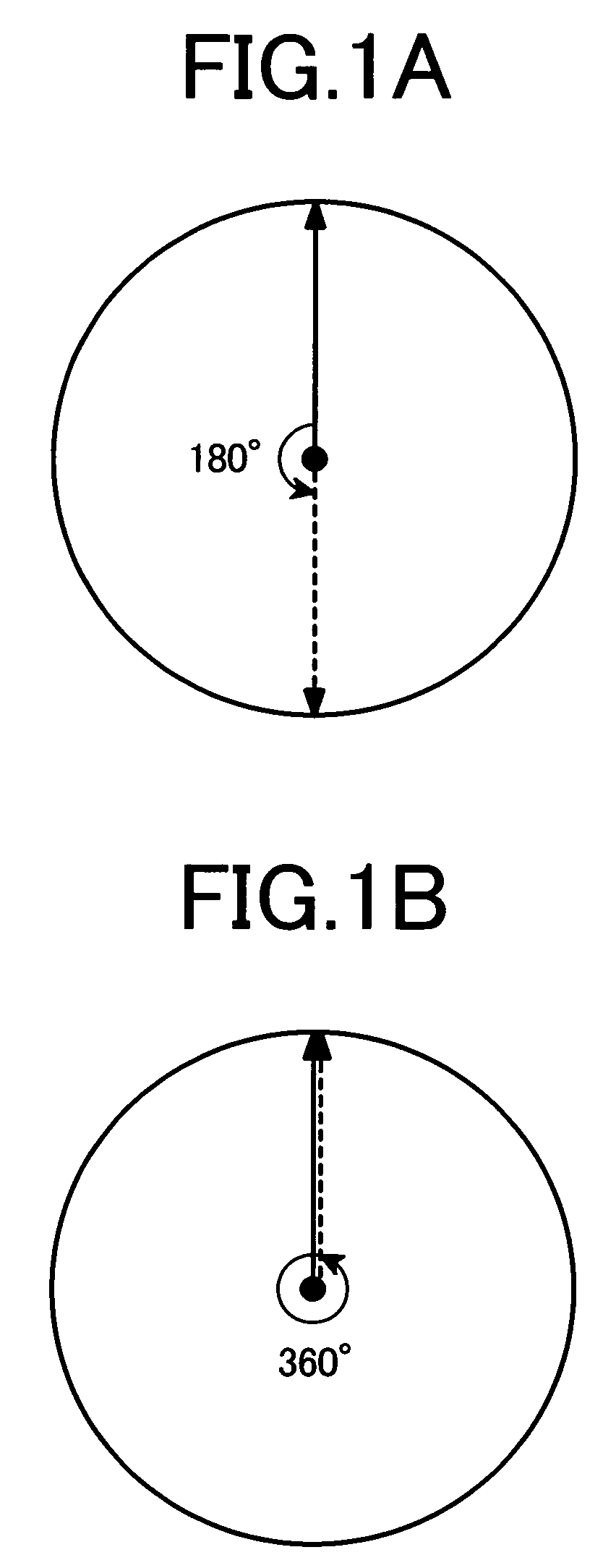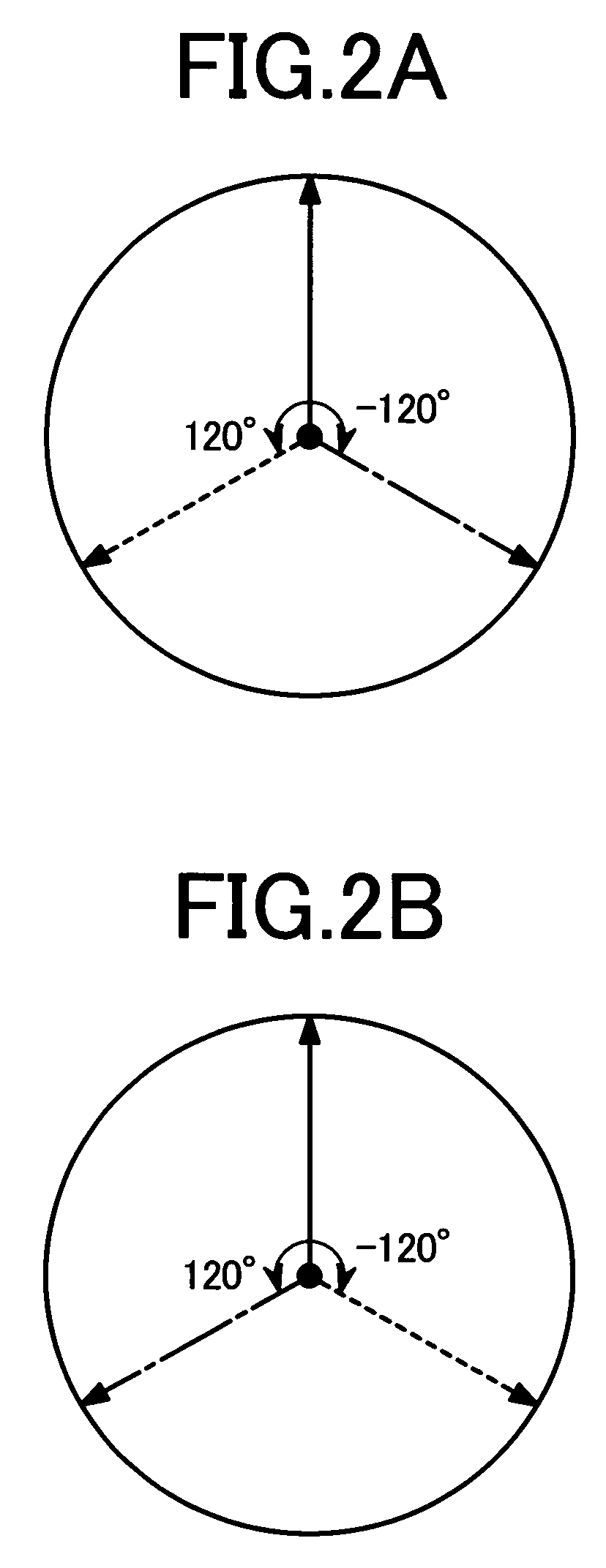Ultrasonic Imaging Device
a technology of ultrasonic imaging and imaging device, which is applied in the field of ultrasonic imaging technique, can solve the problems of increasing the pulse width of the second-order harmonic echo signal obtained as an output signal, unavoidable use of filters having sharp band-cutoff characteristics or narrow band-pass characteristics, and a particular serious problem
- Summary
- Abstract
- Description
- Claims
- Application Information
AI Technical Summary
Benefits of technology
Problems solved by technology
Method used
Image
Examples
Embodiment Construction
[0036]An embodiment of the present invention will be described hereunder with reference being made to the accompanying drawings. In FIGS. 4, 5, 6, 7, 8, 9, 10, 11, 12, 13, 15, 16, a vertical axis denotes signal amplitude (shown in relative value) proportional to a sound pressure, and a horizontal axis denotes time (μs).
[0037]FIG. 3 is a typical example of a block diagram showing an ultrasonic imaging system constructed to embody the present invention.
[0038]Elements that constitute an ultrasonic probe 1 are each connected to a transmit beamformer 3 and a receive beamformer 10 via transmit / receive selection switches 2. The transmit beamformer 3 generates signals that become ultrasonic pulses with directivity when transmitted through the elements. Each signal is generated using a waveform that has been selected and read out from a transmit waveform memory 5 by a transmit waveform selector 4 under control of a transmit / receive sequence controller 6. The signal is converted into the ultr...
PUM
 Login to View More
Login to View More Abstract
Description
Claims
Application Information
 Login to View More
Login to View More - R&D
- Intellectual Property
- Life Sciences
- Materials
- Tech Scout
- Unparalleled Data Quality
- Higher Quality Content
- 60% Fewer Hallucinations
Browse by: Latest US Patents, China's latest patents, Technical Efficacy Thesaurus, Application Domain, Technology Topic, Popular Technical Reports.
© 2025 PatSnap. All rights reserved.Legal|Privacy policy|Modern Slavery Act Transparency Statement|Sitemap|About US| Contact US: help@patsnap.com



